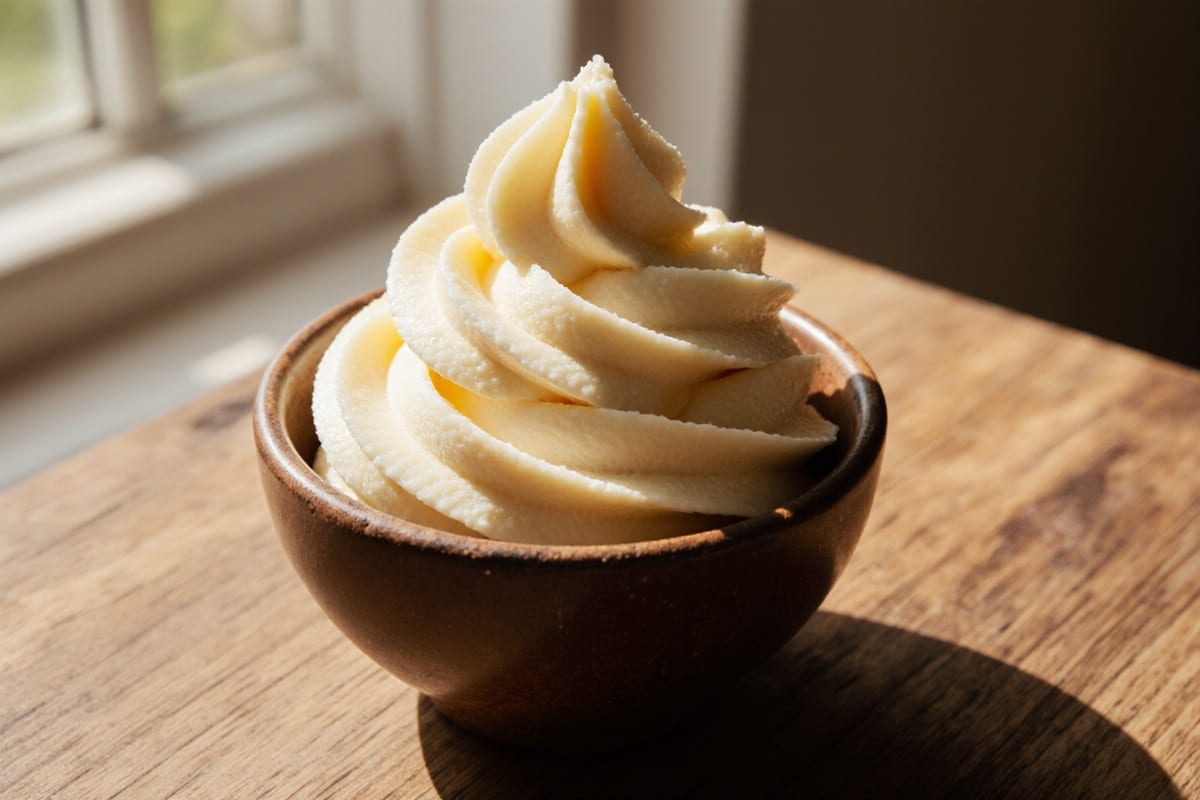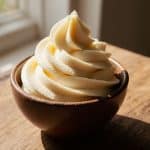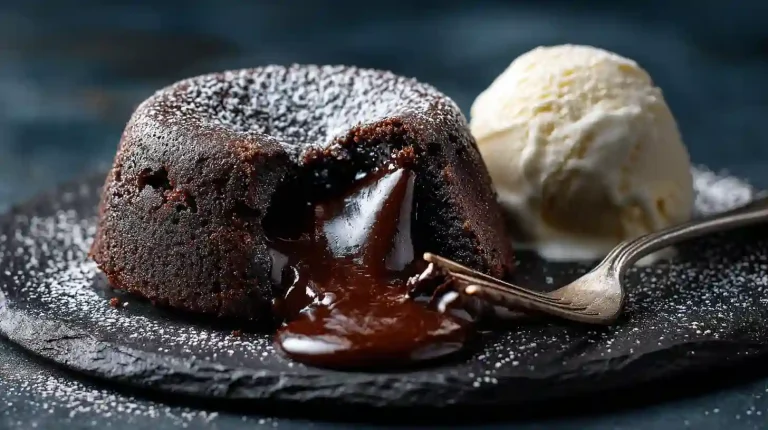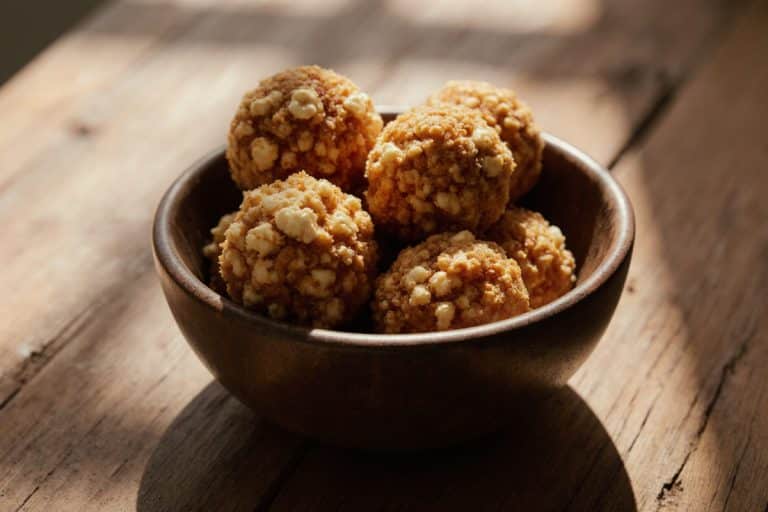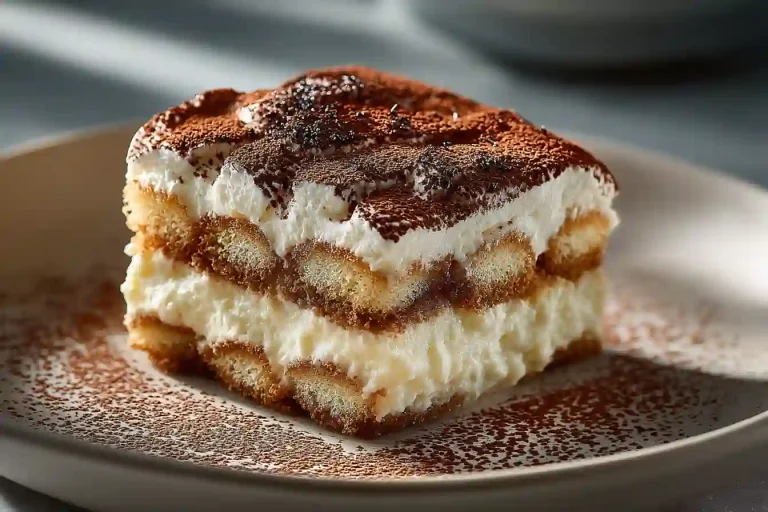Gordon Ramsay Buttercream Frosting Recipe
Gordon Ramsay buttercream frosting is the game-changer for your baking. Forget the days of cloyingly sweet frostings that leave your cakes feeling heavy. With this recipe, you’ll whip together a light, airy frosting that spreads like a dream and holds its shape too. Trust me, once I learned to incorporate a splash of heavy cream into butter and sugar, everything clicked — no more excuses, just pure, fluffy perfection. Plus, Ramsay’s secret pinch of salt? It’s the magic touch that elevates sweetness into something truly special.
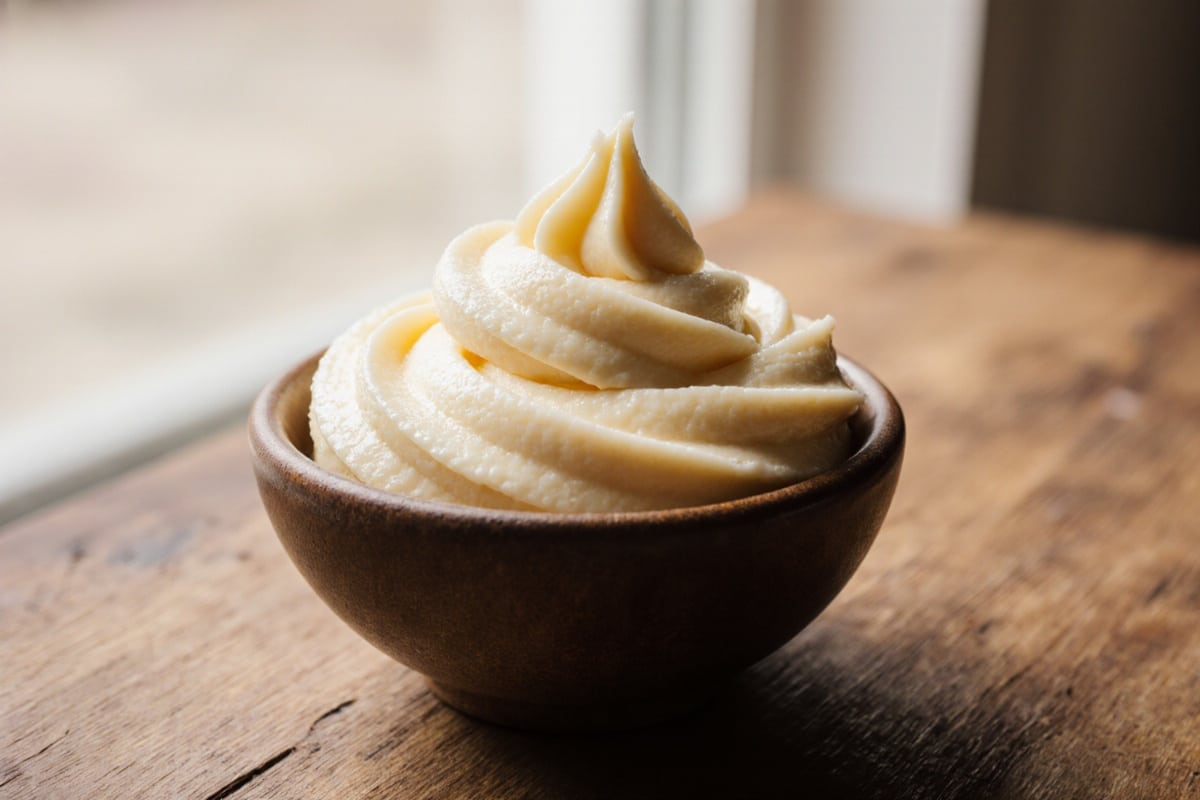
A Closer Look at Gordon Ramsay Buttercream Frosting
What sets gordon ramsay buttercream frosting apart?
Ramsay doesn’t just heap sugar on butter. He balances unsalted butter, sifted confectioners’ sugar and a splash of heavy cream to get a mousse-like lift. A four-minute whip in a stand mixer with a paddle adds air so the frosting spreads easily and pipes cleanly; a final pinch of salt sharpens the sweetness for more depth than plain American buttercream.
Key components and their functions
Unsalted butter (about 227 g) gives fat and structure, and 380 g of sifted powdered sugar adds sweetness and keeps the frosting stable. Sixty milliliters of heavy cream lightens the mix so the butter and sugar turn into fluffy buttercream frosting with heavy cream. Add 1 teaspoon vanilla and a pinch of salt to round the flavor and stop the finish from tasting cloying.
Understanding reader goals and search intent
Most bakers who find this page want a gordon ramsay buttercream frosting recipe that’s practical and repeatable. They look for how to get that airy Ramsay texture, what butter to use, and quick fixes when things go sideways. You’ll get exact weights, timing and troubleshooting so you can hit that airy, stable finish without guessing.
Nutrition & Health Profile
Standard nutritional facts per 100 g
Per 100 g, Ramsay-style buttercream delivers roughly: it’s rich, so portion control matters.
- Calories: 550 kcal
- Total Fat: 38 g (24 g saturated)
- Carbohydrates: 52 g (50 g sugar)
- Protein: 0.7 g
- Sodium: 120 mg
Pros and cons of a Ramsay-style buttercream
Pros: great whipability, stable piping, and a creamy mouthfeel from the cream and butter. The pinch of salt keeps it from tasting overly sweet. Cons: it’s high in saturated fat and sugar, so watch portions or pick Swiss meringue or whipped cream frosting if you need fewer calories.
How heavy cream levels influence texture and richness
The 60 ml of heavy cream adds richness and lightness. Add too much and the frosting loses structure; too little and it’s dense and hard to pipe. Aim for cream equal to about 10–15% of the combined butter and sugar weight so the emulsion holds air.
Ingredients & Equipment
Essential ingredients: amounts and purposes
For a classic gordon ramsay buttercream frosting recipe you’ll need: measure precisely and sift the sugar for best texture.
- Unsalted butter, room temp: 227 g (provides creaminess)
- Confectioners’ sugar, sifted: 380 g (sweetens & stabilizes)
- Heavy whipping cream: 60 ml (lightens texture)
- Vanilla extract: 1 tsp (flavor booster)
- Fine salt: a pinch (balances sweetness)
Accurate weighing on a digital scale and sifting sugar give a uniform texture and correct ratios. Prep both ingredients before you start to save time.
Must-have tools: from stand mixer to spatula
A stand mixer with a paddle attachment is my go-to for lift. You’ll also want:
- A fine-mesh sieve for sifting sugar
- A reliable digital kitchen scale (±1 g)
- Flexible spatulas for scraping bowl sides
- Two medium bowls for butter and sugar prep
These simple items keep your workflow smooth and fuss-free.
Getting ingredient temps right: room temp butter & sifted sugar
Use butter at 20–22 °C so it whips without melting. Too warm and the frosting will split; too cold and you’ll end up with lumps. Sift powdered sugar twice to remove clumps and speed whipping.
Method & Technique Step by Step
Aerating butter and salt: beat until pale
Put cubed room-temp butter and a pinch of salt in the mixer. Beat medium-high (speed 6–7) for 3–4 minutes until it turns pale yellow — that means air’s in and you’ve built the base for light buttercream. Scrape down the sides halfway through so everything aerates evenly.
Incorporating sugar gradually: sifting and pacing
On low, add sifted confectioners’ sugar in three parts, pausing 30 seconds between each addition. After the last addition, increase speed to medium (4–5) for another minute to smooth the mix. Take it slow so sugar doesn’t overwhelm the butter.
Adding liquids & whipping to airy perfection
Reduce speed to low and drizzle in the heavy cream (60 ml) and vanilla extract. Once combined, crank to high (7–8) and whip for 1–2 minutes until the frosting roughly doubles and holds soft peaks. You want something like whipped mousse — airy, glossy and stable enough to pipe.
Adjusting consistency: chilling vs more cream
If your buttercream is too soft, chill the bowl for 10–15 minutes then rewhip briefly. For firmer texture, add 1–2 tbsp more sifted sugar; if it’s too stiff, beat in 1 tsp heavy cream at a time until spreadable. Make changes slowly so you don’t throw off the flavor.
Troubleshooting Common Mistakes
How cold butter leads to uneven mixing
Cold butter won’t aerate and just chunks up. If you still see lumps after 2 minutes, let the butter sit 10 minutes or microwave in 5-second bursts until soft but not melting. Restart on low and finish until the mix is silky.
Grainy frostings from rushed sugar: how to fix
If you dumped powdered sugar all at once, the finish can be gritty. Rescue it by sifting another 50 g into the batch and whipping on high for 2–3 minutes, or warm the bowl over a pot of simmering water for 20 seconds then rewhip. Heat helps dissolve crystals that didn’t integrate.
Remedies for overly runny frosting
Runny buttercream usually means too much cream or melted butter. Chill it in the fridge for 15 minutes, then whip again; if it’s still loose, add 1 tbsp sifted sugar at a time. As a last resort, fold in 1 tbsp instant powdered gelatin dissolved in 1 tbsp hot water (cooled first) for extra stability.
Overwhipping pitfalls: avoiding separation
Overwhip and you’ll see pockets of butterfat break from the emulsion. Stop once you hit stiff peaks — lift the beater and the peak should stand without drooping. If it separates, pull out a tablespoon of frosting, whisk in a splash of cream, then fold it back in to rebalance.
Variations, Flavor Twists & Pairings
Salty-sweet salted buttercream options
Turn this into a salted buttercream by using ¼ tsp fleur de sel or a few sea salt flakes. Try ½ tsp smoked sea salt for a savory pop. Taste as you go and add salt slowly before piping.
Chocolate, citrus & coffee spin-offs
- Chocolate: Melt 100 g dark chocolate, cool, then beat into your base for a chocolate buttercream.
- Citrus: Add 1 tbsp fresh lemon or orange zest and 1 tbsp juice for bright citrus buttercream.
- Coffee: Dissolve 1 tsp espresso powder in 1 tbsp warm cream and whip in for a bold coffee kick. Each variation keeps that fluffy Ramsay-style texture.
Vegan & dairy-free buttercream alternatives
Swap unsalted butter for 227 g vegan block butter and use 60 ml coconut cream. Use plant-based powdered sugar or certified sugar free of bone-char, and whip like the classic recipe though expect a slightly looser texture. Read more about buttercream frosting.
Ideal desserts to team up with this buttercream
This frosting works well on a range of desserts. Try it on:
- Vanilla sponge or classic chocolate layer cakes
- Cupcakes—especially red velvet or carrot cake
- Sugar cookies—for sandwich cookies or decorative piping
- Fruit tarts—add a swirl instead of whipped cream
Ramsay-Style Serving Tips & Storage
Ramsay’s air-whipping and salt balance techniques
Before your final whip, add a tiny pinch of salt and give it a quick 30-second blitz. That adds a little more air so decorations are crisp and peaks hold. Taste as you go — Ramsay seasons desserts like a savory dish.
Best serving ideas & complementary desserts
Pipe rosettes on cupcakes, layer it between cake tiers or spread it on brownies. Pair with fresh raspberries or citrus segments for contrast, or serve alongside a scoop of vanilla gelato to cut the richness.
Storage guidelines: refrigerate, reheat & rewhip
Store leftover buttercream in an airtight container in the fridge for up to five days. Bring it to room temperature for 30 minutes, then whisk on medium speed for 1–2 minutes to restore fluff. If it seems dry, add 1 tsp cream and beat until smooth.
Coloring without collapsing: gel dyes and heavy cream roles
Use concentrated gel food colors for vibrant hues — liquid dyes will thin the buttercream. Add color after the main whip, one drop at a time, folding gently. If the texture loosens, chill 15 seconds and rewhip; the heavy cream in the base helps keep structure, so don’t skimp.
Gordon Ramsay Buttercream Frosting
Ingredients
Equipment
Method
- Beat cubed room-temp butter and a pinch of salt on medium-high speed for 3–4 minutes until pale yellow.
- With mixer on low, gradually add sifted confectioners' sugar in three parts, pausing 30 seconds between each addition. Then increase speed to medium for another minute.
- Drizzle in heavy cream and vanilla extract, then whip on high for 1–2 minutes until frosting roughly doubles in volume and holds soft peaks.
- If frosting is too soft, chill for 10–15 minutes and rewhip. If too stiff, add 1 tsp heavy cream at a time until spreadable.
Nutrition
Notes
Love this recipe?
Give us 5 stars and comment!Video tutorial: gordon ramsay buttercream frosting

FAQ – gordon ramsay buttercream frosting
- Can I use salted butter?
- Better to use unsalted butter and add controlled salt to balance sweetness as Ramsay recommends.
- What if my frosting is runny?
- Chill for 10 minutes, then whip again; you may also add a bit more powdered sugar or chill the mixing bowl.
- How do I store the buttercream?
- Keep in an airtight container in the fridge for up to 5 days. Bring to room temperature and rewhip before using.
- Can I color this buttercream?
- Yes, gel food coloring works best without thinning the frosting.
- Why is heavy cream important?
- Cream stabilizes and enriches the texture, unlike milk, which thins and weakens consistency.
Conclusion
Now that you’ve tackled Gordon Ramsay buttercream frosting, take a moment to bask in your success. The silky texture, the perfect balance of sweet and salty, and the gorgeous finish — you’ve transformed your baking game! Picture that fluffy frosting enveloping your cake, each slice revealing the airy interior, and listeners swooning over your creation. It’s time to make this recipe your own. Get creative, adapt it to suit your desserts, and let your confidence in the kitchen soar. Now it’s your turn — make it bold, make it yours.

